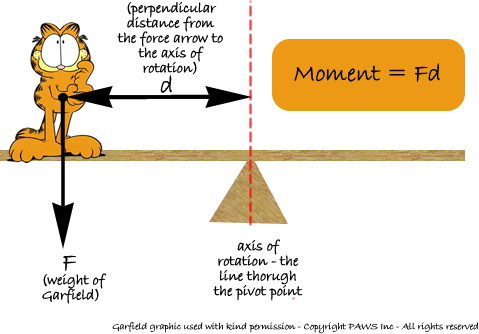

The moment of a force is the turning effect that it has. It is measured in newton metres (Nm)
The ability of a force to make an object turn depends on TWO factors:
- the size of the force that acts at right-angles to a line through the turning point of the object you wish to turn
- the distance the force is applied from the turning point.
A small force can have the same effect as a big one if it is applied a greater distance from the fulcrum or turning point. So you can use the moment principle to maximise the effect of a force you use to move something.
When the force is supplied by a weight its centre of gravity is the point from which the distance the force acts is measured.
Be careful not to call the moment a 'turning force' - the turning force is only part of the moment... the moment is the effect that the turning force has on the system! If it were just a force it would be measured in N... the moment is measured in Nm which has the same dimensions as energy.
At GCSE they expect you to define the distance in a particular way - so learn the phrasiology by heart!

Moment = force × perpendicular distance from the line of action of the force to the axis of rotation
That's quite a mouthful - but learn it!
The Principle of Moments
For a body in equilibrium (balanced!) the sum of the clockwise moments is equal to the sum of the anticlockwise moments.
 clockwise moments =
clockwise moments =  anticlockwise moments
anticlockwise moments
F1d1 = F2d2

How to tackle questions


